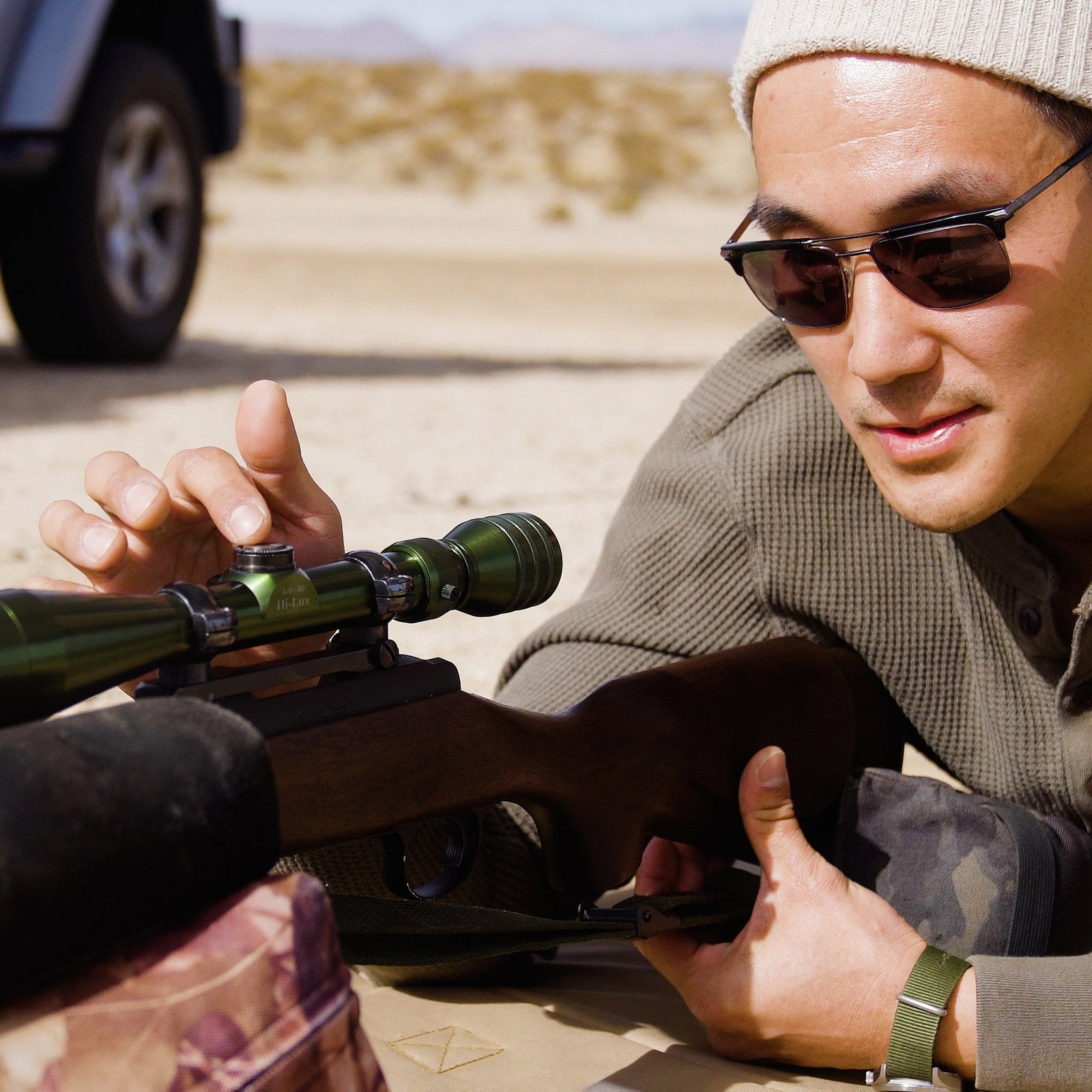Honest 200-yard muzzleloader accuracy and game-taking performance did not begin with the introduction of the modern in-line ignition rifle. Serious muzzleloader shooters and hunters of the 1840s and 1850s turned to newly developed elongated conical bullets, and the new fast-twist bore rifles developed to shoot them, to enjoy that level of performance almost 150 years before the introduction of the Knight MK-85. And to better tap that level of performance, a few of those rifle makers also became the first riflescope makers. Some of the rifles and loads of that period could regularly keep 10 shots inside of 2 inches at 40 rods (220 yards).
Strangely, the muzzleloading industry has practically ignored this chapter of muzzleloading history - even though the rifles and loads of that period are likely the most accurate long-range muzzleloaders of all time. Renowned rifle makers such as William Billinghurst, Morgan James, Edwin Wesson, Norman Brockway, and many others designed and refined the rifles and projectiles that, by the 1850s, had become the most accurate and farthest reaching muzzleloaders of all time. And many of these rifles were topped with telescopic rifle sights (a.k.a. scope) of 6x, 8x, 12x...or even 20x magnification.
These are the rifle makers, rifles, bullets and optical sights that made the patched round ball and rifles that would only shoot a patched round ball obsolete. During the Civil War, many of these scoped long-range muzzle-loaded "sporting" and "target" rifles were used by sharpshooters (snipers) to pull off some legendary shots. And during later (1870s-1880s) international target competition, many top competitors continued to rely on these muzzle-loaded bullet rifles to shoot at ranges out to 1,000 yards - due to the extreme accuracy of the rifles and loads. And this was during a time when big single-shot breechloading rifles like the Sharps and Remington (rolling block) had nearly made all muzzle-loaded hunting rifles obsolete.
For whatever reason, the traditional muzzleloader industry has balked at reproducing the rifles and performance of this period. Thompson/Center Arms and a few other makers have offered percussion rifles with 1840s-1850s looks, but for the most part these have been rifled to shoot a patched round ball - with a turn-in-48 inches twist. Actually, this rate of twist is nothing more than a compromise. A true .50 caliber "patched round ball" rifle will feature lands and grooves that spin with a turn-in-60 to 72 inches.
On the other hand, the super accurate bullet rifles of the 1850s were generally .40 or .45 caliber, and rifled to shoot accurately with 400 to 500 grain conical bullets that were very commonly 3 times longer than in diameter. To stabilize such lengthy bullets, these muzzleloaders featured rifling that spun with rates of twist as fast as one-turn-in 18 to 22 inches. Muzzleloading has always been about better performance. That's what spurred ongoing muzzleloader development for more than 600 years.
Introduced about 1970, the T/C Hawken rifle was the No. 1 muzzle-loaded big game rifle in this country until the Knight MK-85 appeared on the scene. Somewhere around 1-million of the rifles (in finished and kit form) were sold before the bottom dropped out of the traditional rifle market. Why did U.S. shooters abandon the T/C Hawken and other traditional muzzle-loaded rifles? It wasn't because they were turned off by traditional muzzleloader looks. They simply sought better performance for hunting deer, elk and other big game. When Tony Knight went to the turn-in-32 inches rate of twist (1986-87), and finally to the 1-in-28 twist in 1988-89, the Knight in-line rifles became ideal for shooting the new saboted bullet concept - opening the door for the muzzleloading hunter to choose from a wide range of bullet styles and weights. The combination allowed the modern muzzleloading hunter to better tailor a rifle and load to the size of game being hunted. If the traditional muzzleloading rifle makers of the 1970s and 1980s had more closely followed the rifles and bullets of 1840 thru 1860, rather than the earlier patched round ball rifles, the modern in-line rifles would have had a harder time dethroning them. And muzzleloading today would have likely been an entirely different game.
The rifles pictured above is a Pedersoli .50 caliber"Missouri River Hawken". This rifle has been fitted with the modern Leatherwood/Hi-Lux 6x Long Malcolm scope, of circa 1855 design. And all will hold their own with today's modern in-line rifles - and deliver a heavy lead bullet with quite a wallop. If you've been looking for a traditionally styled rifle which can still deliver honest 200-yard performance on big game, the two muzzleloaders shown above (Pedersoli Hawken and Dixie Whitworth) will certainly fill the bill. However, they do represent a considerable investment. Complete with the Leatherwood/Hi-Lux "Malcolm" scope, these mid 1800s styled long-range rifles will set you back $1,200 to $1,400. If you happen to own one of those "1-million" or so T/C Hawken rifles built and sold since about 1970, there is a more affordable way to enjoy this kind of traditional muzzleloader performance. Green Mountain Rifle Barrel Co. now offers a .50 caliber replacement barrel that is a true bullet barrel, rifled with a 1-in-24 twist.The Leatherwood/Hi-Lux 6X Long Malcolm Scope Retails For $475.




Michael Sanacore
February 08, 2019
I would like to learn more about each of these rifles and consider a purchase, so please email me. Thank you.